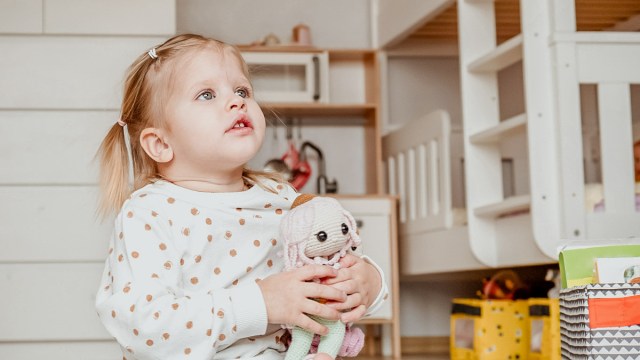For parents, naptime is sacred. After all, keeping a young child alive is exhausting—oh wait, nap time isn’t about us? Maybe not, but a period of quiet play time or rest is rejuvenating for busy kids and the adults in charge: It helps with memory consolidation and can boost energy to make it through the day, among other things, according to the Sleep Foundation. So when little ones want to drop their nap, parents should have a backup plan that’ll ensure downtime stays on the schedule.
If this sounds like an impending battle of wills you’d rather not have, there are a few simple things you can do to make it easier. In a recent Instagram post, behavior analyst and parent coach Mandy Grass shared her thoughts on the issue.
While Gross says she has conflicting feelings regarding nap time, she offers two tips for parents looking to keep it on the table. “Let’s say you’ve got a 3.5- or 4-year-old who doesn’t really need the nap but kinda needs the nap, but you need the break. How do you handle it?”
This post is sponsored by LEGO® DUPLO®. Embark on a playful learning journey with your little one, where every block combines learning with creativity and fun. Discover how LEGO DUPLO brand’s age-specific products—like the Learn-to-Count Number Train, Brick Box, and Buildable People with Big Emotions—support your child’s emotional and intellectual development. Start your child’s developmental milestones journey today!
1. Take sleep off the table.
Instead of insisting kids nap, Grass suggests that parents write down the expectations and reinforce them. So, quiet time in their rooms for an hour means they don’t have to sleep: They can look at books, snuggle their stuffed animals, etc. She also says that if you use a clock, “When the light is red, they stay in their rooms; if the light is green, they can come out.”
2. Introduce a novel activity.
This is something only allowed at nap time. The idea is that since kids get to do this thing only during quiet time, it’s likely to hold their attention and keep them engaged a bit longer. “Maybe it’s a super special LEGO or maybe a certain coloring page or whatever that might be,” Gross says.
She continues by adding that if kids are tired—they usually fall asleep. And, when the hour is up, be sure to reinforce the expectations by calling out their actions. “I love the way you stayed in your room. Now we can make cookies.”
Even if your kid doesn’t sleep, they will slow down and relax, learn how to play independently and be happy on their own while you can tackle undone tasks or sit down and have your own quiet time.
